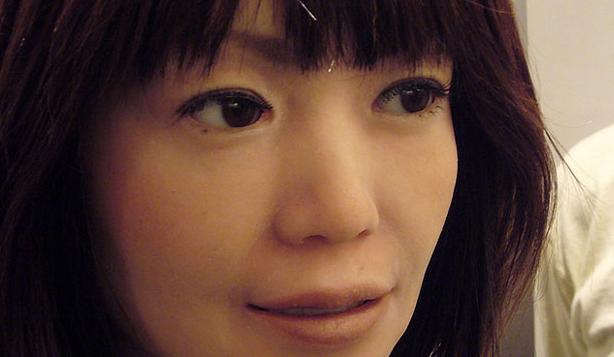You know that creepy feeling you get, when you watch something like The Polar Express or look at Realborn dolls and can’t help but imagine the humanoid creatures taking over the world and possibly eating your face (Or is that just me?)? It’s called the uncanny valley–that time when robots or animations go from adorable likenesses alienating replicas with an increase in how “human” they appear–and most of us have experienced it at some time or another. Now, scientists have been researching what actually happens to our brains when confronted with these terrifying creatures creations.
Picking out 20 subjects, between the ages of 20 and 36, the study honed in on people who had no prior experience either spending time in Japan (where being exposed to androids is more culturally common) or working with robots.
They used the Repliee Q2, which has 13 degrees of movement in its face alone and is especially human-looking. They made videos of her waving, nodding, drinking water, and picking up a piece of paper from a table, and then filmed some of the Japanese women the Q2 is based on performing the same actions. Then they stripped the robot of its outer skin and hair, leaving its wires in the open, and filmed that as well.
Showing these videos to the people chosen for the study–without telling them which was human and which was robot–the brain reacted normally when faced with the humans and the stripped-down robot, but “lit up like a lightbulb” when the fully-put-together Q2 was on the screen.
When faced with the uncanny android, the parts of the brain that process bodily movements and empathy were on high alert. As Wired noted, “the brain couldn’t compute the incongruity between the android’s human-like appearance and its robotic motion…when the two states [Of robotic/human motion and appearance] are in conflict, trouble arises.” As Ayse Pinar Saygin, assistant professor of cognitive science at UC San Diego, says about the results, “What it seems to be doing is looking for its expectations to be met — for appearance and motion to be congruent.”
So basically: We can tell when something’s not fully human. But that doesn’t mean we can stop them from taking over the world.
(via Wired)








Published: Jul 21, 2011 04:14 pm